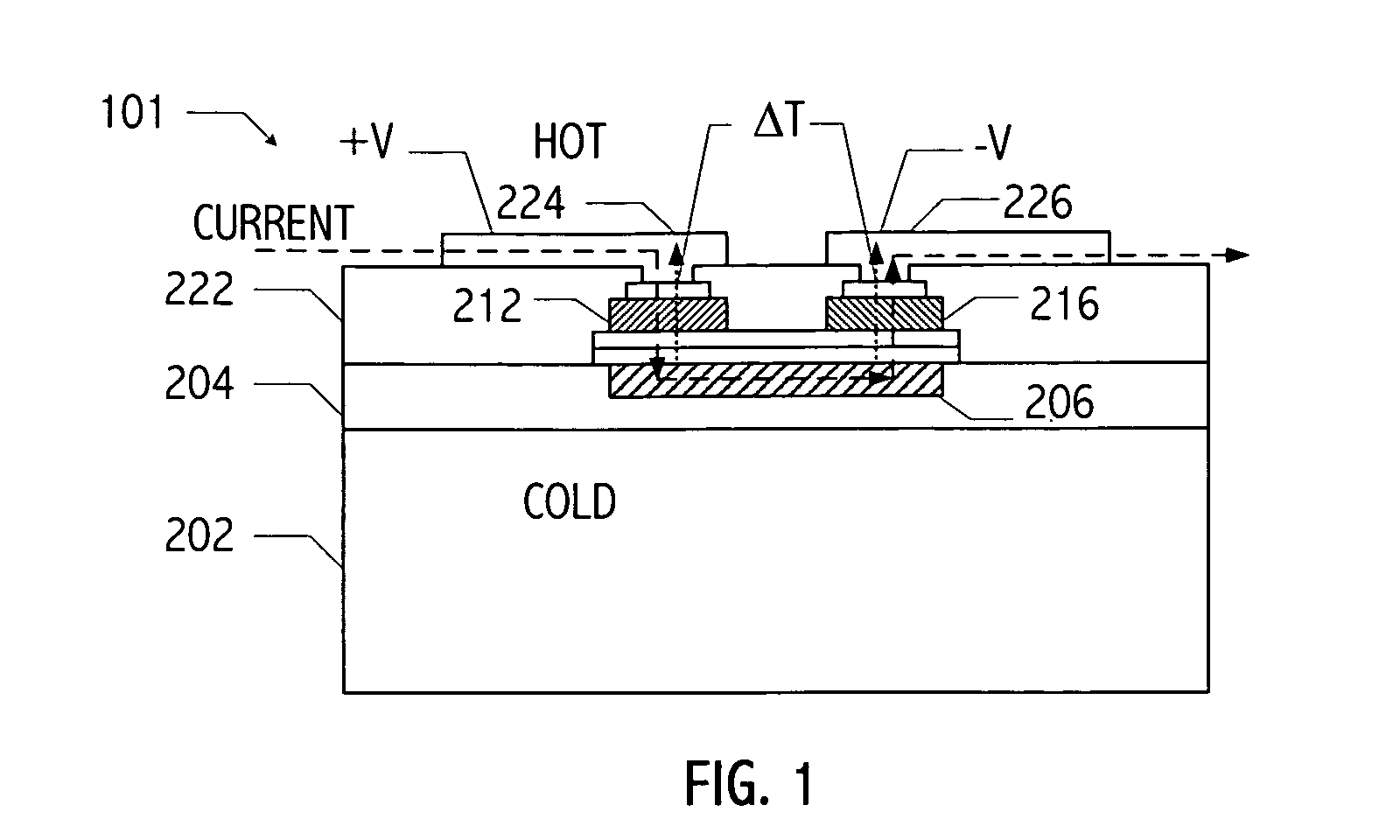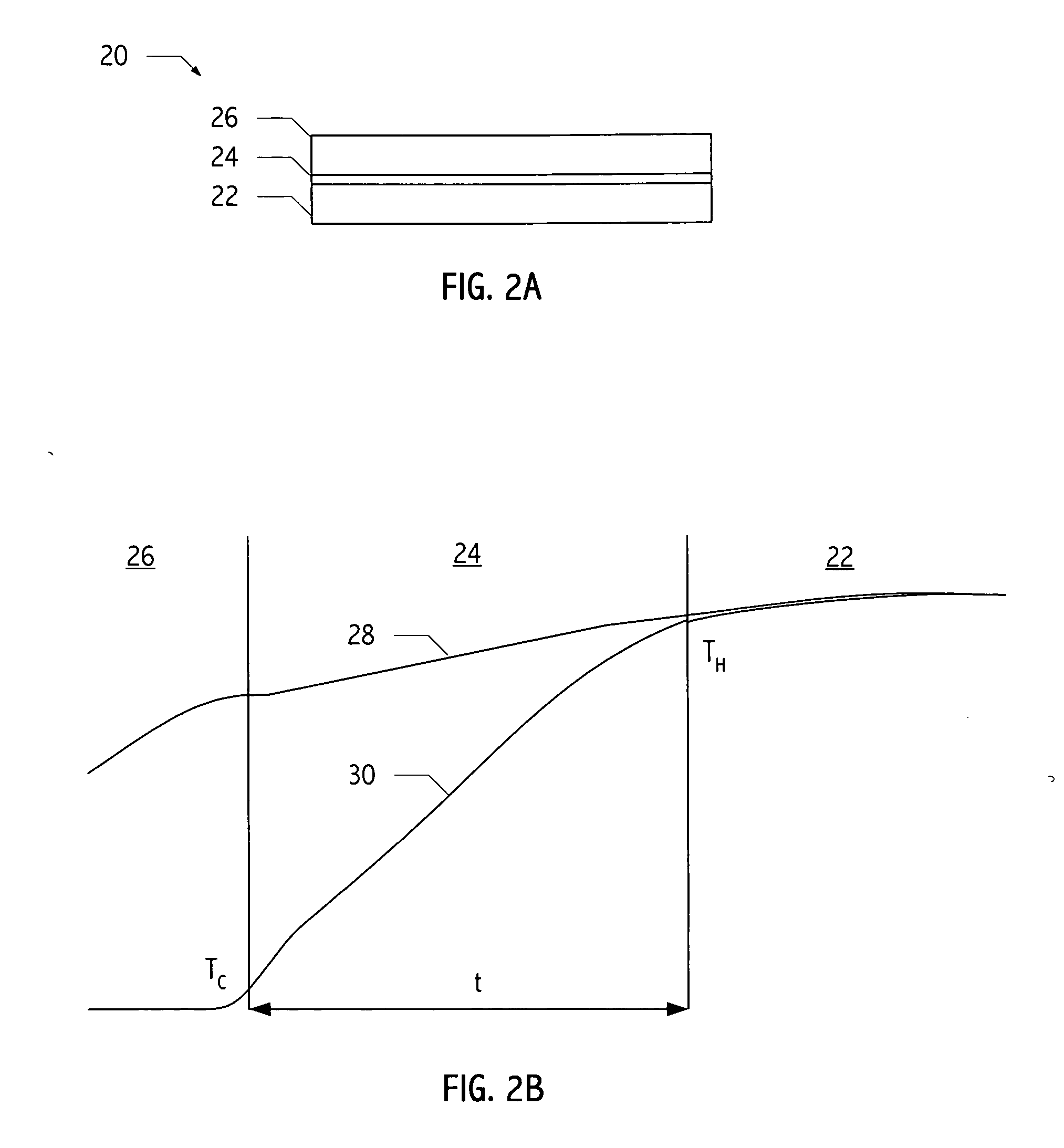Monolithic thin-film thermoelectric device including complementary thermoelectric materials
a thermoelectric device and complementary technology, applied in the field of thermoelectric devices, can solve the problems of limited cooling capacity, adversely affecting the performance of these devices, and high hardware cos
- Summary
- Abstract
- Description
- Claims
- Application Information
AI Technical Summary
Benefits of technology
Problems solved by technology
Method used
Image
Examples
Embodiment Construction
[0051] An exemplary thermoelectric device (thermoelectric device 101 of FIG. 1) includes contacts on a front side (i.e., “top” side) of the structure (e.g., contacts 224 and 226) and a contact thermally coupled to a backside of the structure (e.g. contact 206). As used herein, a contact thermally “coupled” to a backside of the structure may be directly or indirectly coupled to the backside of the structure. In operation, the contacts on the front side of the thermoelectric device have a temperature (e.g., THOT) substantially different from a temperature (e.g., TCOLD) of the contact thermally coupled to the backside of the substrate. The vertical thermoelectric device includes an n-type thermoelectric element and a p-type thermoelectric element (e.g., thermoelectric elements 212, and 216) coupled electrically in series and thermally in parallel. For example, in operation of thermoelectric device 101, a voltage differential is applied between contacts 224 and 226 creating a Peltier ef...
PUM
 Login to View More
Login to View More Abstract
Description
Claims
Application Information
 Login to View More
Login to View More - R&D
- Intellectual Property
- Life Sciences
- Materials
- Tech Scout
- Unparalleled Data Quality
- Higher Quality Content
- 60% Fewer Hallucinations
Browse by: Latest US Patents, China's latest patents, Technical Efficacy Thesaurus, Application Domain, Technology Topic, Popular Technical Reports.
© 2025 PatSnap. All rights reserved.Legal|Privacy policy|Modern Slavery Act Transparency Statement|Sitemap|About US| Contact US: help@patsnap.com



